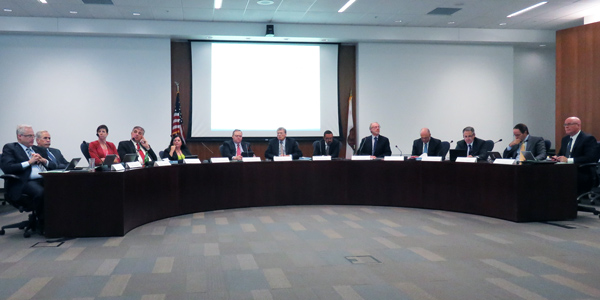By Jason Fordney
CAISO’s Board of Governors on Tuesday unanimously approved rule changes that would allow market participants to partake in a program that models generator outages and the impact of remedial action schemes (RAS) on market operations.
During a presentation to the board, CAISO Director of Market and Infrastructure Policy Greg Cook said “stakeholders are generally supportive of the proposal” — but some still worry about unintended consequences.
The board’s vote greenlights modeling of generator contingencies and RAS in the day-ahead and real-time markets, as well as the congestion revenue rights allocation process, but the package still requires approval by FERC.
CAISO’s current modeling only addresses situations in which a transmission line goes down, potentially causing overflow on other lines. The new generator modeling reflects how the system will react to the loss of generation and is meant to ensure that transmission lines are not overwhelmed as the system picks up to address the unexpected shutdown of a generator.
RAS are protective processes that automatically disconnect generators or load to prevent transmission line overload in the event that another line goes out. The new method will update the ISO’s security constrained economic dispatch by modeling the loss of generation within the dispatch, as well as modeling the loss of transmission and generation because of RAS operations. The ISO currently uses manual, out-of-market dispatches to manage generator contingencies.
The changes will alter the congestion component of LMPs so that they consider the cost of positioning the system to account for generator contingencies and RAS operations. A RAS-connected generator does not increase congestion and will potentially receive higher energy prices than other generators at the same bus.
The Western Energy Imbalance Market (EIM) Governing Body on Sept. 6 approved the rule changes for generators that are within the EIM but outside the ISO. (See EIM Body Approves Generator Loss Modeling Plan.) Body Chairman Doug Howe on Tuesday urged the CAISO board to carefully implement the proposal.
Howe said the change will increase the efficiency of the real-time market across the EIM, improve dispatch and lead to more accurate market prices. But he also urged the ISO to ensure the new rule doesn’t create market abuse or too much complexity.
Southern California Edison raised concerns that the program would create a new value stream that could incentivize participants to pursue RAS rather than building new transmission. A company representative questioned whether generators on RAS should be rewarded with higher locational prices.
Trying to value RAS resources “gives us pause,” and the implementation should be carefully monitored, said SCE Director of State Legislative Policy Catherine Hackney. SCE has thousands of megawatts of generation under RAS.
“We need to be vigilant about watching and being wary and being able to respond if things don’t go exactly how we like,” Hackney said.
When it unveiled the proposal in May 2016, CAISO said it had more than 20 RAS modeled within its own system, with more throughout the Western Interconnection. (See Stakeholders Wary of CAISO Contingency Modeling.) The ISO currently factors RAS into its market operations through adjustments to its market software but views that approach as inadequate.




